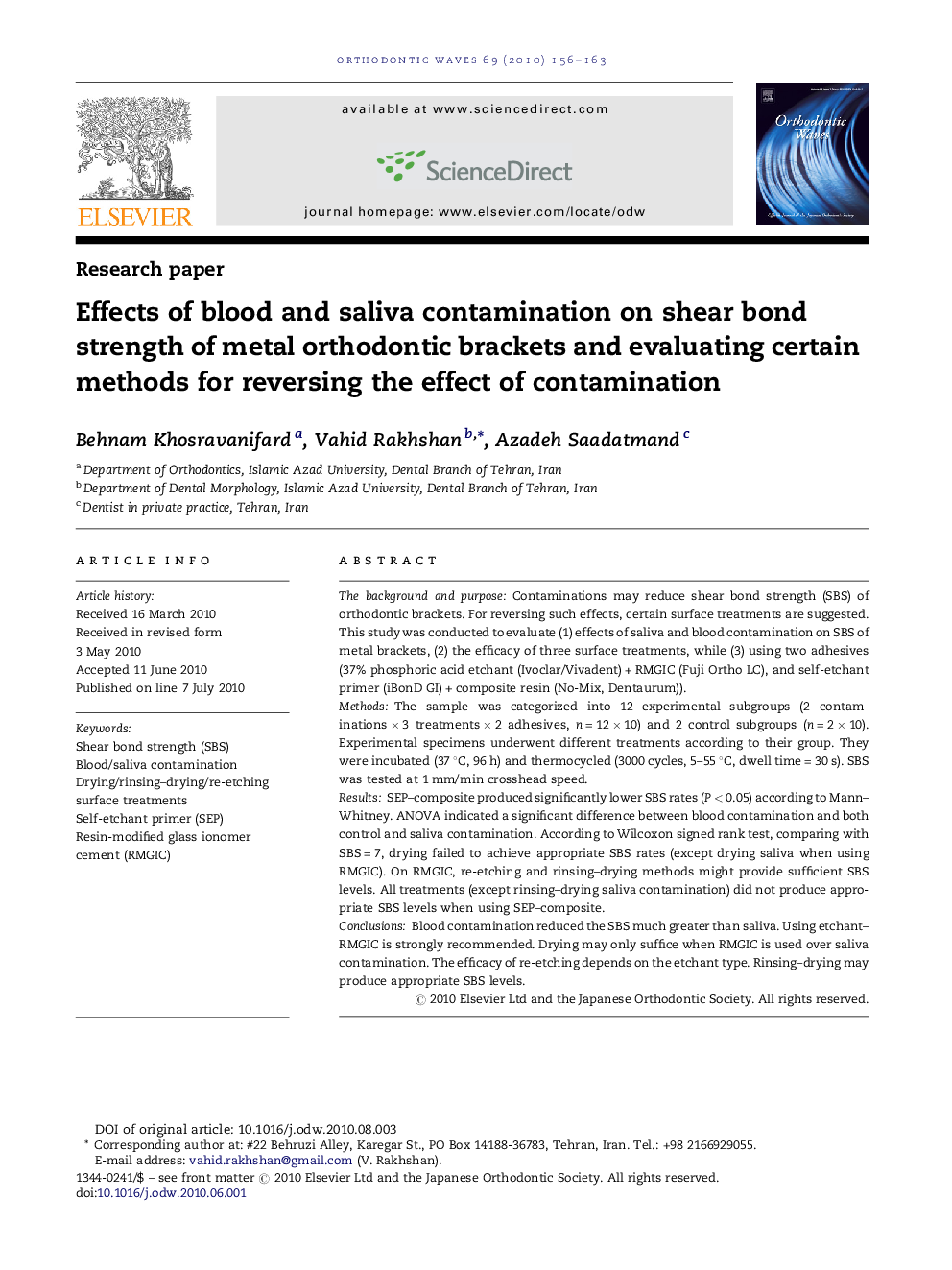| Article ID | Journal | Published Year | Pages | File Type |
|---|---|---|---|---|
| 3170555 | Orthodontic Waves | 2010 | 8 Pages |
The background and purposeContaminations may reduce shear bond strength (SBS) of orthodontic brackets. For reversing such effects, certain surface treatments are suggested. This study was conducted to evaluate (1) effects of saliva and blood contamination on SBS of metal brackets, (2) the efficacy of three surface treatments, while (3) using two adhesives (37% phosphoric acid etchant (Ivoclar/Vivadent) + RMGIC (Fuji Ortho LC), and self-etchant primer (iBonD GI) + composite resin (No-Mix, Dentaurum)).MethodsThe sample was categorized into 12 experimental subgroups (2 contaminations × 3 treatments × 2 adhesives, n = 12 × 10) and 2 control subgroups (n = 2 × 10). Experimental specimens underwent different treatments according to their group. They were incubated (37 °C, 96 h) and thermocycled (3000 cycles, 5–55 °C, dwell time = 30 s). SBS was tested at 1 mm/min crosshead speed.ResultsSEP–composite produced significantly lower SBS rates (P < 0.05) according to Mann–Whitney. ANOVA indicated a significant difference between blood contamination and both control and saliva contamination. According to Wilcoxon signed rank test, comparing with SBS = 7, drying failed to achieve appropriate SBS rates (except drying saliva when using RMGIC). On RMGIC, re-etching and rinsing–drying methods might provide sufficient SBS levels. All treatments (except rinsing–drying saliva contamination) did not produce appropriate SBS levels when using SEP–composite.ConclusionsBlood contamination reduced the SBS much greater than saliva. Using etchant–RMGIC is strongly recommended. Drying may only suffice when RMGIC is used over saliva contamination. The efficacy of re-etching depends on the etchant type. Rinsing–drying may produce appropriate SBS levels.
